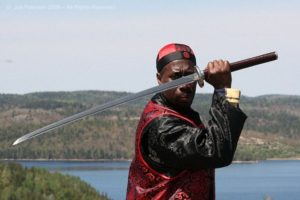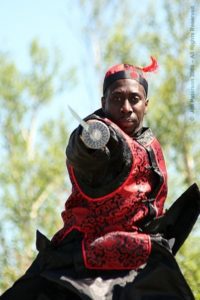 Where Are the Great Taiji Boxers of Old? Are They Lost in Translation?
Where Are the Great Taiji Boxers of Old? Are They Lost in Translation?

Taiji Quan is a unique style of Martial Arts that encompasses a very broad spectrum of training skills and philosophical concepts. Taiji Quan is not only a self-directed method of personal protection but also a unique form of spiritual development. The name Taiji Quan can also be translated as meaning the supreme method for vitality and self-acknowledgment with the emphasis on self-control. Taiji Quan is one of the three high forms of Internal Martial Arts, sometimes called a soft Internal art.
The other two systems are Hsing-I ,’mind boxing’ and Pa-Qua Chang, ‘eight directional palms’. The reason Taiji Quan is known to be the supreme ultimate fist is because all of the five major family styles have elements from both Hsing-I and Pa-Qua Chang embedded in their forms. These three soft Internal forms are unique in their presentation and also in their application because the focus is on the development of Qi (Chi) – the ‘dunamas’ or vital dynamic force. Most Martial Arts and competitive sports require awareness of utilizing Qi (specialized breathing techniques). Taiji Quan takes this to a higher level with special Qi Gong and Chi Na training. The harder External styles express and cultivate Qi through techniques incorporating speed and power drills. It is quite apparent in their striking techniques and defensive applications. In contrast, the  Internal or softer styles concentrate on a more relaxed and fluid expression of Qi. The inherent power is not as openly visible in their techniques and defensive applications. Likewise, the breathing methods between Internal and External styles vary in nature.
Internal or softer styles concentrate on a more relaxed and fluid expression of Qi. The inherent power is not as openly visible in their techniques and defensive applications. Likewise, the breathing methods between Internal and External styles vary in nature.
The harder External styles focus on expressing and discharging force with an intense Kia cry when delivering a fatal blow. On the contrary, the softer Internal styles use more subtle techniques like Fa-Jing (discharging force by borrowing and returning to the opponent) and Chi Na (to seize and control the opponent’s movements). We do not practice Kia cry in Internal styles to preserve our vital force. Instead we concentrate on listening and adhering skills, following the path of energy flow and splitting the aggressive force away from our bodies to neutralize any physical harm or damage.
The million dollar question to Taiji enthusiasts would be:
* How do we preserve and carry on the Martial Arts legacy of Taiji Quan?
The essence of the legacy of this ancient art goes back to the 13th century A.D. and to the founder, Chang San-feng, a monk of the Wu Tang Monastery. This extraordinary individual combined the theories and exercises of Taoist philosophies and principles with Buddhist meditative practices and techniques. This created the foundation for Taiji Quan as a Martial Art. Chang San-feng developed the Wu Tang School of soft Internal Martial Art and meditation.
Taiji Quan offers each interested individual a way to improve vitality and learn natural self-protection methods. This ancient art is a very effective way to preserve and improve health and wellbeing. For Taiji Quan to regain its true Martial Art status there needs to be an open exposure of this aspect to the general public. When Taiji boxers will participate in Pride Fighting, the Ultimate Fighting Challenge and K1Competitions, this step will put Taiji Quan back on the map as a true Martial Art. Even without straight fighting, sparring competitions will bring acknowledgment and recognition to this worthy art. Thanks to more recent Martial Artists like Jet Lei, Peter Kwong and Sibelle Hu, Taiji Quan has been noted as an effective art of self-defense and a complete Martial Art.
* Could it be that Taiji Quan in its basic interpretation as a boxing art has been lost in translation?

Taijiboxing golden palm training technique
The original Taiji masters might be surprised and even disappointed in the new generation and its approach to the legacy of their art. In their time, to acquire status as a true Master one had to step up to the plate and prove their skills through combat fighting. Push Hands competitions and theoretical classic knowledge was not a substantial measure of their skill. During the old Masters’ times, the determining factor for a successful school was the Master’s ability to prove himself as a proficient martial artist. This was done through demonstrated examples of wisdom, courage and physical skills.
 Today we live in new times and possess different attitudes. We depend less, or in some cases not at all, on our physical skills for survival or as a means for making a living. Study of the combative nature of Taiji Quan has taken a back seat to the health benefits associated with the exercise-based Taiji forms.
Today we live in new times and possess different attitudes. We depend less, or in some cases not at all, on our physical skills for survival or as a means for making a living. Study of the combative nature of Taiji Quan has taken a back seat to the health benefits associated with the exercise-based Taiji forms.
Nowadays, the legacy of Taiji Quan has been diluted to the bare essentials of the exercise form, using basic Taiji Push Hands techniques and the occasional Chi Gung meditative practices. Taiji Quan is usually presented as the Taiji form without the martial content and merely as a beneficial exercise for the elderly. The true representation of this art was to promote vitality and maintain vigor. This aspect has been lost in translation to catering towards a mature audience without the proper understanding of the importance of the Martial Art integration.
Dr. Lamb ‘s documented research and contribution to Taiji through his Arthritis and Diabetes programs is a stepping stone in raising public awareness and government involvement. This will ultimately lead towards increased awareness when it comes to Taiji Quan as an exercise but not as a Martial Art. Let us make sure that this stepping stone will set a foundation for the promotion and revival of Taiji Quan as a complete Martial Art system without any shortcuts and compromises.
 Sifu Dennis Pounall lives and works in Northern Ontario as a Paramedic. He has been tirelessly practicing Martial Arts for over 27 years. His styles include Yang style Taiji Quan, Pang Gi noon, Chinese Okinawan Gung fu and Kook Sool Won( Korean Martial Art). He teaches workshops and participates in national and international competitions in various styles. He is affiliated with Kitchener Kicks Martial Arts Centre, Atado school Defensive Arts and Taiji Quan and 3-fires martial Arts center.
Sifu Dennis Pounall lives and works in Northern Ontario as a Paramedic. He has been tirelessly practicing Martial Arts for over 27 years. His styles include Yang style Taiji Quan, Pang Gi noon, Chinese Okinawan Gung fu and Kook Sool Won( Korean Martial Art). He teaches workshops and participates in national and international competitions in various styles. He is affiliated with Kitchener Kicks Martial Arts Centre, Atado school Defensive Arts and Taiji Quan and 3-fires martial Arts center.


